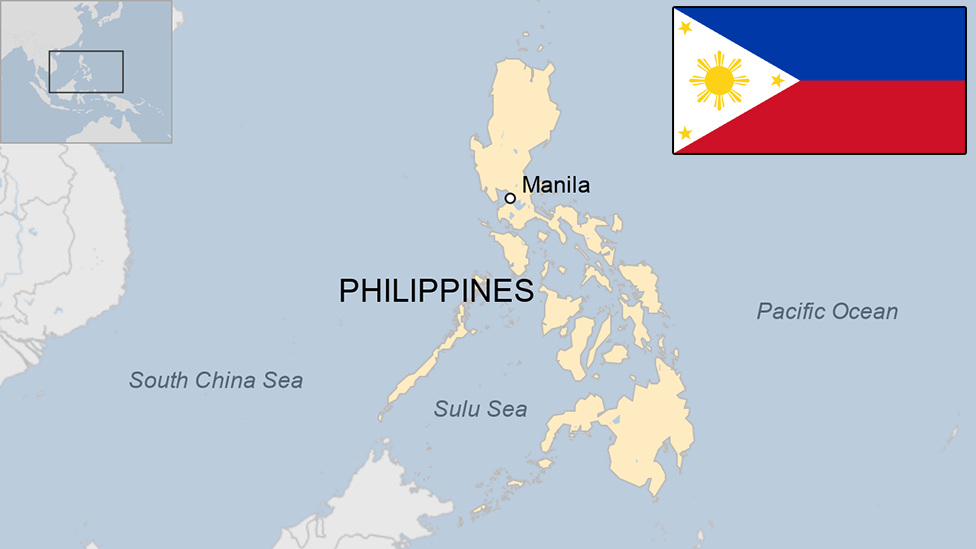Typhoon Nock-Ten kills four in the Philippines
- Published
The storm is carrying winds of up to 120km/h (74mph)
Powerful typhoon Nock-Ten has killed at least four people after making its way through the Philippines, officials say.
Despite initial fears, the heavily-populated capital, Manila, was spared by the storm, which had winds of up to 120 km/h (74 mph).
Nock-Ten brought down trees and power lines, and forced more than 380,000 people out of their homes.
Authorities have warned of flash floods and mudslides for the next 36 hours.
Emergency workers were sent to clear roads of fallen trees and power lines. Officials promised that electricity would be restored quickly in badly hit areas.
Dozens of national and international flights had been cancelled because of the storm, and officials said more than 12,000 people spent Christmas stuck at ports after authorities barred ferries from sailing.
Sea, land and air transport have slowly resumed operations.

Albay and two other regions declared "state of calamity"
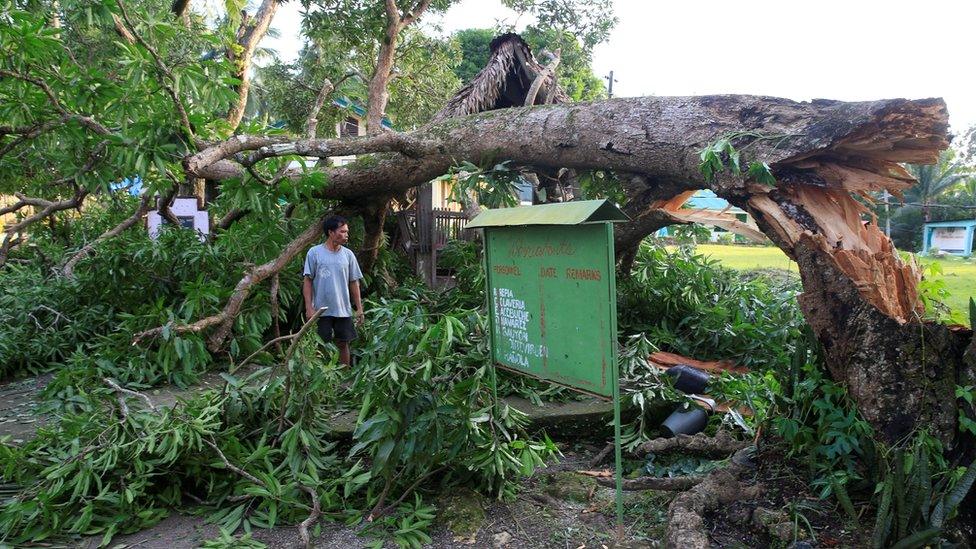
Strong winds brought down trees, cutting electricity in many places
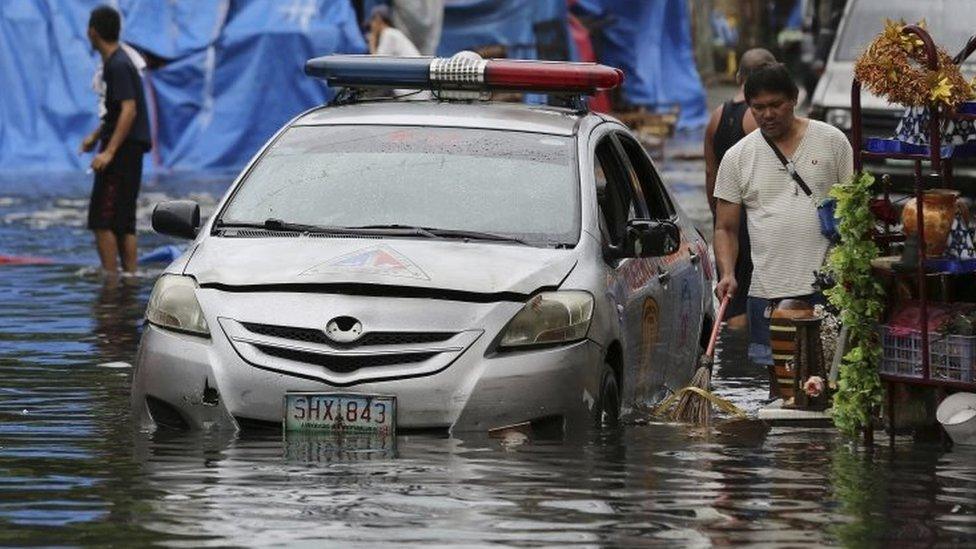
The typhoon brought heavy rain to the Manila area
A farmer died after being hit by a fallen tree in Quezon province, and three other villagers, including a couple who were swept by a flash flood, died in Albay province, the Philippine Star reported., external
In Albay, officials reportedly imposed forced evacuations, as residents refused to leave their homes at Christmas, the biggest holiday in the largely Catholic nation.
Nock-Ten, known as Nina in the Philippines, made landfall on the eastern coast near Catanduanes island late on Sunday, and it was heading towards the South China Sea.
In Catanduanes, Albay and Camarines Sur, officials declared a "state of calamity" to allow faster disbursement of emergency funds, the Manila Bulletin said, external.
In October, Super Typhoon Haima hit the country, killing at least four people. In 2013, super typhoon Haiyan claimed more than 7,350 lives.

- Published25 December 2016
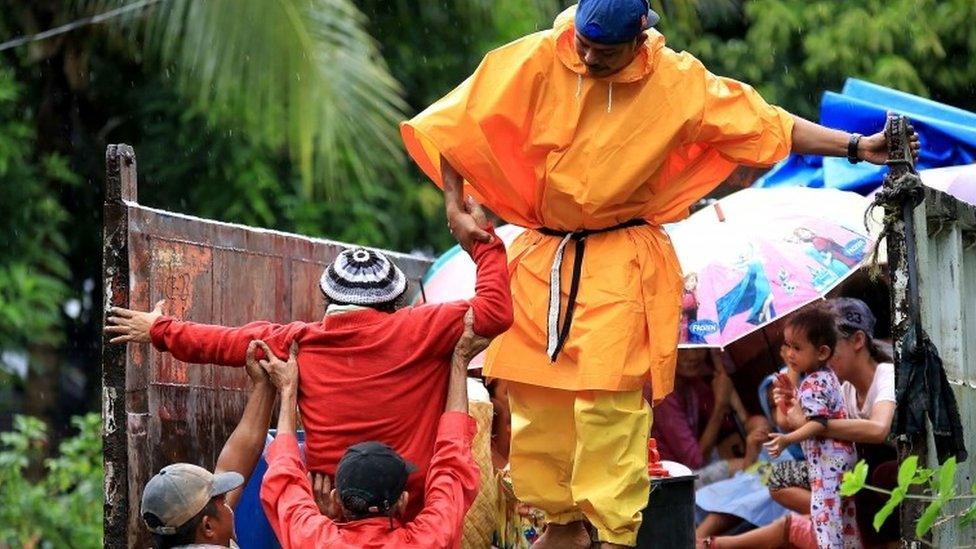
- Published25 December 2016

- Published20 October 2016
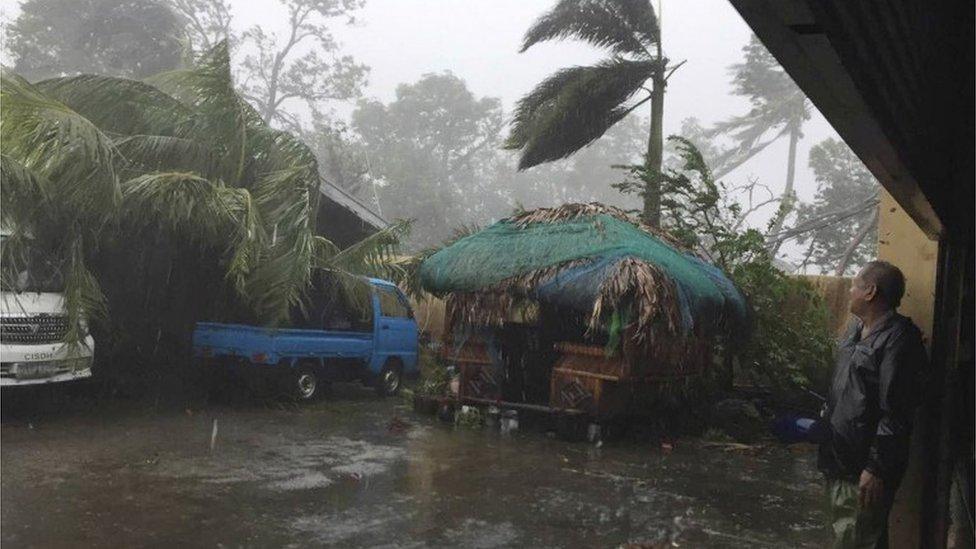
- Published5 July 2023
